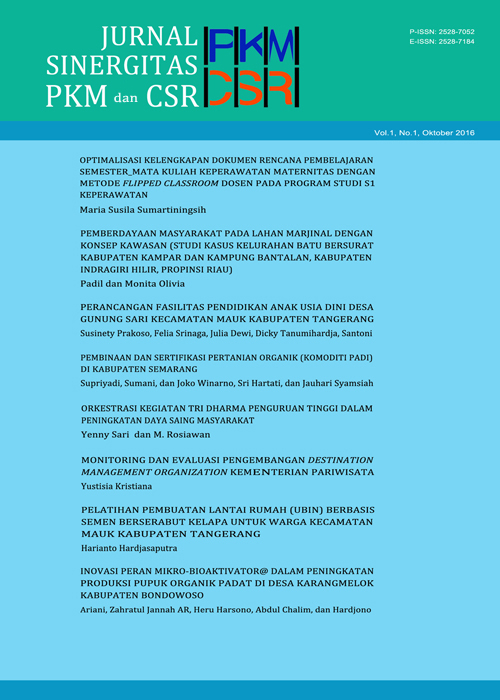THE USE OF QRIS PAYMENTS FOR ULOS WEAVERS IN SIGAOL VILLAGE, ULUAN DISTRICT, REGENCY. TOBA
DOI:
https://doi.org/10.19166/jspc.v8i3.8738Keywords:
Transaction digitalization, Market access, Technology adaptationAbstract
Digitalization has penetrated into various aspects of life, including in financial transactions. This community service aims to help ulos weavers in Sigaol Village, Uluan District, Toba Regency, in adapting to the use of digital payments through QRIS (Quick Response Code Indonesian Standard). This program uses a socialization and hands-on training approach. The socialization was carried out to provide a basic understanding of QRIS and its benefits, while the direct training was focused on how to use the QRIS application in daily transactions. In addition, technical assistance is also provided to ensure that weavers can use this technology smoothly. Results With the implementation of QRIS payments, ulos weavers in Sigaol Village can make transactions digitally more easily and quickly. This not only makes the payment process more practical, efficient, and effective, but also increases financial inclusion and strengthens the local economy. Through this activity, weavers are expected to be able to increase their competitiveness in a wider market, while authors get the opportunity to contribute directly to community empowerment.
References
Agustinah, R. K., Saripudin, U., & Yusup, A. (2022). Analisis Fikih Muamalah tentang Hutang Piutang dan Implementasinya pada Penerapan GoPayLater pada Aplikasi Gojek. Bandung Conference Series: Sharia Economic Law, 2(1), 289-295. https://doi.org/10.29313/bcssel.v2i1.549
Ani, N., Deby, R., Nugraha, M. P., & Munir, R. (2011). Pengembangan Aplikasi QR Code Generator dan QR Code Reader dari Data Berbentuk Image. Konferensi Nasional Informatika - KNIF 2011, 148-155.
Azka Fikri. (2021). Pengaruh Penggunaan Shopeepay Sebagai Dompet Digital Terhadap Perilaku Konsumtif Mahasiswa Feb Usu. KomunikA, 17(2), 1-11. https://doi.org/10.32734/komunika.v17i2.7556
Bank Indonesia. (2016). PBI 18/40/PBI/2016 Processing of Payment Transactions. Bank Indonesia, 51. https://www.bi.go.id/id/peraturan/sistem-pembayaran/Pages/pbi_184016.aspx
Bank Indonesia, D. G. B. (2019). Peraturan Anggota Dewan Gubernur. Peraturan Anggota Dewan Gubernur Nomor 21/18/Padg/2019 Tentang Implementasi Standar Nasional Quick Response Code Untuk Pembayaran, 1-30.
Ika Febrilia, Shela Puspita Pratiwi, & Irianto Djatikusumo. (2020). Minat Penggunaan Cashless Payment System-Dompet Digital Pada Mahasiswa Di Fe Unj. JRMSI - Jurnal Riset Manajemen Sains Indonesia, 11(1), 1-19. https://doi.org/10.21009/jrmsi.011.1.01
Junior, M. S. (2018). Fungsionalitas Konflik Gojek: Studi Fenomenologi Terhadap Konflik Pengemudi Gojek Di Kota Kediri. Jurnal Analisa Sosiologi, 6(1). https://doi.org/10.20961/jas.v6i1.18176
Manurung, D. G., & Malau, A. R. (2021). OMISS Operations Management and Information System Studies The use of technology acceptance model on student behavior using e-money. 1(1), 1-9. https://doi.org/10.24036/jkmb.xxxxxxxx
Monica, M. A. (2020). Analisis Hukum Islam terhadap Pinjaman Uang Elektronik Shopee Pay Later pada E-Commerce. Universitas Islam Negeri Sunan Ampel, 1-68.
Mustika, M. (2019). Penerapan Teknologi Digital Marketing Untuk Meningkatkan Strategi Pemasaran Snack Tiwul. JSAI (Journal Scientific and Applied Informatics), 2(2), 165-171. https://doi.org/10.36085/jsai.v2i2.352
Otoritas Jasa Keuangan. (2016). Peraturan Otoritas Jasa Keuangan Nomor: 77
/POJK.01/2016 TENTANG LAYANAN PINJAM MEMINJAM UANG
BERBASIS TEKNOLOGI INFORMASI. Otoritas Jasa Keuangan, 1-29. https://www.ojk.go.id/id/regulasi/otoritas-jasa-keuangan/peraturan-ojk/Documents/Pages/POJK-Nomor-77-POJK.01-2016/SAL-POJK Fintech.pdf
Panginan, E. K., & Irwansyah. (2020). Fenomena Aplikasi Kredit dan Pinjaman Online Kredivo di Indonesia. Komunikasi Dan Kajian Media Karya, 4, 15.
Rahmi, J., & Riyanto, R. (2022). Dampak Upah Minimum Terhadap Produktivitas Tenaga Kerja: Studi Kasus Industri Manufaktur Indonesia. Jurnal Ekonomi Dan Kebijakan Publik, 13(1), 1-12. https://doi.org/10.22212/jekp.v13i1.2095
Retha Kurnia Wiyono, U. H. (2019). Tanggung Jawab Akulaku Atas Kerugian Konsumen Dalam Perjanjian Pembiayaan Konsumen Online. Simposium Hukum Indonesia, 1(1), 574-586. http://journal.trunojoyo.ac.id/shi
Rizka Safitri, & Miftah Andriansyah. (2020). Analisis Penerimaan Teknologi Keuangan (Fintech) Terhadap Penggunaan Aplikasi Fintech Ovo. Jurnal Mitra Manajemen, 4(4), 538-549. https://doi.org/10.52160/ejmm.v4i4.369
Rokhim, R., Wulandari, P., & Mayasari, I. (2018). Small medium enterprises technology acceptance model: A conceptual review. International Journal of Business and Society, 19, 689-699.
Ronaldo Siahaan, C. (2022). Makna di Balik Iklan Traveloka PayLater “Baru Dari Traveloka PayLater!” CITRAWIRA : Journal of Advertising and Visual Communication, 3(2), 127-138. https://doi.org/10.33153/citrawira.v3i2.4635
Sutarmin, & Susanto, A. (2017). Potensi Pengembangan Transaksi Non Tunai Di Indonesia. Sustainable Competitive Advantage-7 (SCA-7) Feb UNSOED, 7(September), 292-302.http://jp.feb.unsoed.ac.id/index.php/sca-1/article/viewFile/1025/pdf_198 www.idxchannel.com. (2022). Apa itu Aplikasi Dana Dompet Digital? https://www.idxchannel.com/banking/apaitu-aplikasi-dana-dompet-digital www.linkaja.id. (2019). Tentang Linkaja. 2019. https://www.linkaja.id/tentang
Downloads
Published
Issue
Section
License
Copyright (c) 2024 Frederick Saroha Silaban, Pasaman Silaban, Sabriana Simanjuntak

This work is licensed under a Creative Commons Attribution-ShareAlike 4.0 International License.
Authors who publish with this journal agree to the following terms:
1) Authors retain copyright and grant the journal right of first publication with the work simultaneously licensed under a Creative Commons Attribution License (CC-BY-SA 4.0) that allows others to share the work with an acknowledgement of the work's authorship and initial publication in this journal.
2) Authors are able to enter into separate, additional contractual arrangements for the non-exclusive distribution of the journal's published version of the work (e.g., post it to an institutional repository or publish it in a book), with an acknowledgement of its initial publication in this journal.
3) Authors are permitted and encouraged to post their work online (e.g., in institutional repositories or on their website). The final published PDF should be used and bibliographic details that credit the publication in this journal should be included.




